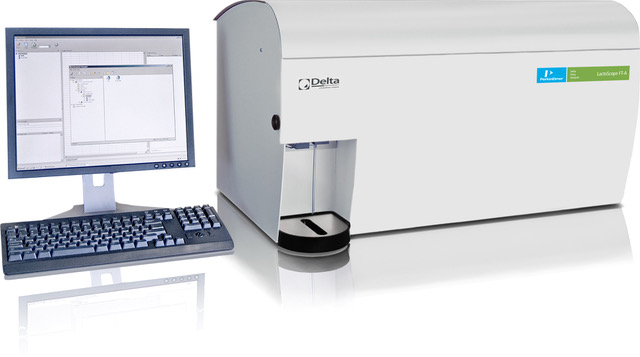Rosstat recorded a record low depreciation of business assets in eight years

At the end of 2022, the degree of depreciation of fixed assets of Russian commercial companies amounted to 48.3%. The figure has been above 50% for the past six years and has now dropped to its lowest level since 2014. The dynamics are reflected in Rosstat statistics, which were studied by RBC.
Statistical wear and tear is not a physical concept, but an accounting one. Rosstat calculates the average degree of depreciation as a percentage and shows how much the book value of assets has decreased at the reporting date from their original full book value. The residual value of fixed assets, taken into account in the balance sheets of companies, reflects “the gradual loss of their consumer properties in the amount of accumulated depreciation,” explains Rosstat .
Fixed assets include buildings, structures, machinery and equipment, vehicles, biological resources, and intellectual property. Asset depreciation reports are submitted annually by companies in the commercial sector and non-profit organizations. Small businesses are surveyed every five years and are not included in general statistics.
As Rosstat explained to RBC, the depreciation rate, which characterizes the condition of fixed assets, directly depends on their renewal rates. However, another reason for the decrease in the indicator may be changes in the rules for accounting for depreciation of objects from 2022.
RBC sent a request to the Ministry of Economic Development.
Why has wear decreased?
As follows from the explanations of Rosstat, the degree of depreciation of assets decreases with an increase in the share of liquidated and new fixed assets put into operation in the reporting year. According to preliminary data from the statistics agency, in 2021 and 2022 fixed assets of commercial organizations (excluding small enterprises) worth 13.6 trillion rubles were put into operation. This is more than in pre-pandemic 2019, when assets worth RUB 12.1 trillion were put into operation. The fixed assets of companies were liquidated in 2022 for 1.34 trillion rubles. versus 1.09 trillion in 2021.
Read PIONERPRODUKT .by Collective lawsuits have increased tenfold: which companies are at risk 12 types of parents who cause a child to lose touch with his emotions Top 10 global companies with growth prospects. Bloomberg's selection "I'm selling bullshit": what beliefs prevent managers from selling moreThe second reason for the decrease in depreciation may be due to changes in asset depreciation accounting standards from 2022. “Perhaps, in addition to updating fixed assets and increasing the share of liquidated ones, a decrease in the degree of depreciation of fixed assets of commercial organizations may be associated with changes in accounting,” Rosstat reported.
In 2022, the updated federal accounting standard “Fixed Assets” came into force. “If an item of fixed assets is fully depreciated (has a residual value of zero), the organization can revise its useful life and begin depreciation again. As a result, the residual value of the object increases, and the degree of wear and tear decreases,” the statistical agency indicated.
A decrease in average depreciation may be associated with the beginning of the use of liquidation value (previously this concept was absent in Russian accounting), says Kontur.Scholy expert Alexey Zhogolev. Salvage value is the estimated value that an organization would receive if the asset were disposed of after the end of its useful life. That is, in essence, the selling price of a used fixed asset minus the costs of disposal of the object (for example, remuneration to an intermediary for the sale), Zhogolev notes.
For example, in 2022, the company acquired a fixed asset with an initial cost of 100 thousand rubles. Its useful life is 40 months, and its salvage value is determined as 20 thousand rubles. In this case, monthly depreciation is calculated as 100 thousand rubles. minus 20 thousand rubles, divided by 40 months (equal to 2 thousand rubles). If this happened before the transition to the new standard , then monthly depreciation would be calculated as 100 thousand rubles divided by 40 months (2.5 thousand rubles), Zhogolev indicated. Since depreciation rate reflects accumulated depreciation, when switching to a new standard it will be less, all other things being equal.
Is there an economic factor in reducing wear?
Alexander Isakov, economist at BLOOMBERG Economics for RUSSIA and Central and Eastern Europe, agrees that the decrease in depreciation of fixed assets may have two reasons at the same time - purchases of tangible assets by companies “for future use” in 2022 and changes in accounting standards. He admits that the decline in depreciation in 2022 looks somewhat anomalous against the background of its historical growth, which was monotonously observed in previous years.
According to Rosstat, machinery and equipment are characterized by the greatest wear and tear (57.3% at the end of 2022), although in 2021 this figure was much higher - 63.4%.
Deputy DIRECTOR of the Development Center Institute of the National Research University Higher School of Economics Valery Mironov draws attention to the dynamics of investments last year. “In 2022, an investment paradox occurred. Investment in fixed assets increased, although there was a recession and a decline in business activity. This happened, among other things, thanks to a huge budget stimulus,” he says. “In addition, the company was motivated to update its capacity by the vacancy of niches amid the departure of foreign companies.” An increase in investment could lead to a reduction in wear and tear in the economy as a whole, Isakov agrees.
According to Rosstat, investments in fixed assets of enterprises in Russia at the end of 2022 increased by 4.6% in real terms. Analysts noted that this result in the sanction year was a positive surprise.
A HSE survey based on the results of 2022 showed that investments in providing production with domestic equipment and machinery were identified by 57% of industrialists as a key area for investment. For 35% of enterprises, the most relevant area was investing in the modernization of production facilities for production as part of the implementation of the import substitution program.
In which industries is wear and tear greatest?
The greatest depreciation at the end of 2022 among types of economic activity was recorded in telecommunications (63.6%), wholesale trade, except cars (61.8%), automotive industry (56.9%), and beverage production (59.3%).
According to estimates from expert institutes based on Rosstat statistics, which Mironov cites, the newest equipment with an average age of ten years is now in the food and light industries. In mechanical engineering, equipment is approximately the same age, in contrast to metallurgy, where the average age of equipment is about 18 years.
Read together with it:
- The IEA sees a risk of a decline in oil production in Russia due to sanctions.The IEA sees a risk of reduced oil production in RUSSIA due to US sanctions , but maintains its production forecast. According to the IEA, Russian oil exports will remain unchanged.There is a "significant downside risk" to Russia's oil production forecast due to US sanctions, the International Energy Agency (IEA) said in a report.BLOOMBERG . The agency's experts believe that the latest US sanction...
- UniCredit заявил о галактических усилиях из-за санкций против РоссииUniCredit старается не нарушить «более 15 тыс. санкций», а также не «совершать ошибки», которые позволят изъять его активы в России, заявил гендиректор. После начала военной операции банк начал рассматривать возможность ухода Итальянский банк UniCredit прилагает «галактические усилия», пытаясь соблюсти международные санкции в отношении своего российского подразделения. Об этом заявил генеральный д...
- Pharmaceutical companies see a threat to EU security due to bacteria in UkraineAntibiotic-resistant superbugs have been detected in Ukrainian soldiers since the beginning of the conflict, and now they pose a threat to Europe, according to a foundation developing antibiotics.The Ukrainian conflict threatens Europe with antibiotic-resistant "superbugs," said Henry Skinner, CEO of the AMR Action Fund, which specializes in investing in antimicrobials. His article was published o...
- Reuters узнал, что ЛУКОЙЛ после санкций обратился с просьбой к СШАСША ввели санкции против компании и отвели месяц на сворачивание операций — срок истекает 21 ноября. ЛУКОЙЛ добивается продления, поскольку ему нужно больше времени для изучения предложений по поводу активов, сообщает REUTERS ЛУКОЙЛ попросил Минфин США о продлении крайнего срока для завершения операций после введения санкций, сообщает Reuters со ссылкой на три источника. Вашингтон ввел санкции про...
- Британия запретит морские перевозки российского СПГЗапрет на предоставление услуг по перевозке и страхованию российского СПГ будет вводиться поэтапно и по согласованию с ЕС, который ранее ввел санкции против российского газа. Москва называет ограничительные меры Запада незаконными Великобритания планирует запретит компаниям предоставлять услуги по перевозке и страхованию российского сжиженного природного газа (СПГ), передает REUTERS со ссылкой на ...
- Китай рассматривает возможность введения пошлин на аргентинскую говядинуВ преддверии открытия новой Китайской международной импортной выставки (CIIE), одного из важнейших торговых мероприятий в мире, возникла проблема, затрагивающая всю цепочку поставок скота и мяса из Аргентины: китайское правительство ввело «защитную» процедуру в отношении импорта говядины. Эта мера, вступившая в силу в декабре 2......
- Kyiv imposed sanctions against Dmitriev and Russia's negotiator in Istanbul.The sanctions also affected Kirill Dmitriev, the first deputy minister of education and HEAD of the Ministry of Agriculture of RUSSIA and the former head of the Constitutional COURT of Ukraine.Ukrainian President Volodymyr Zelenskyy has imposed new sanctions against Russian officials. He announced this on his TELEGRAM channel. According to a document posted on the website of the Ukrainian Presiden...
- Орбан добился разрешения Трампа закупать российскую нефтьСША сделали «бессрочное» исключение на поставки российских энергоносителей в Венгрию через «Турецкий поток» и «Дружбу», объявил Орбан после встречи с Трампом. Будапешт и Вашингтон также заключили ряд сделок США сделают для Венгрии исключение из санкций, заявил венгерский премьер-министр Виктор Орбан после встречи с американским президентом Дональдом Трампом. «В Венгрии по-прежнему будут самые низк...



























































